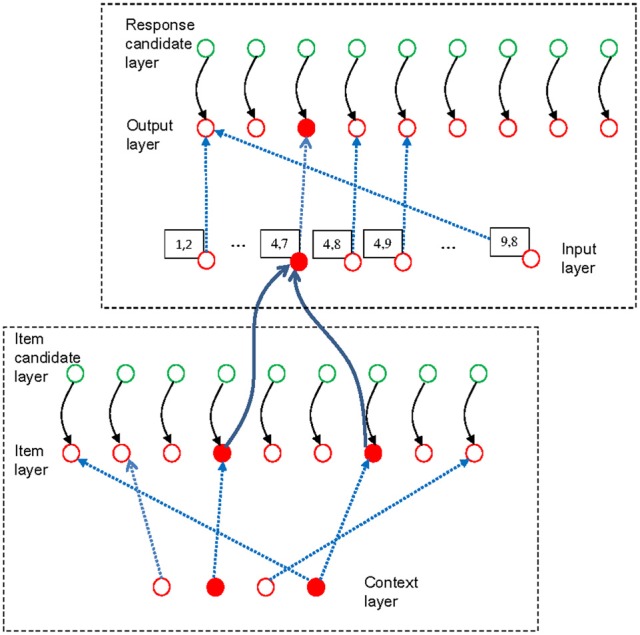Figure 4.

Schematic illustration of the model applied to the arithmetic dual-access paradigm. The bottom-left frame encloses the item-selection module of declarative working memory, and the upper-right frame contains the response-selection module of procedural working memory. The figure shows the state of the model at the end of one trial, in which the digits 4 and 7 have been retrieved from a memory set that includes the digits 1, 2, 4, and 7, each bound to a color context in the context layer. In deviation from Figure 1, the blue broken lines here represent only the bindings strengthened by encoding the list. The two retrieved items (filled red circles in the item layer) have activated the chunk [4, 7] in the input layer of the response-selection module (Only a subset of the chunk units in the input layer is shown). The binding matrix of the response-selection module has been configured for the subtraction task, thereby mapping the [4, 7] chunk to the result unit representing 3. Therefore, the output unit 3 is activated.
